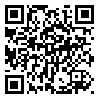Volume 12, Issue 43 (spring 2008)
jwss 2008, 12(43): 65-78 |
Back to browse issues page
Abstract: (22609 Views)
To study the effect of salt stress on quantitative and qualitative parameters of canola (Brassica napuse. L) cultivars, and determine the possible mechanisms of salt tolerance and the best salt tolerance indices, an experiment was conducted under a rain-shelter at experimental field of university of Kerman in 2004. The experimental design was a complete randomized block (RCOD) with four replications. Treatments consisted of all combinations of different levels of three factors including variety (Kobra×Regent, Ceres and Okapi), salt types (NaCl and CaCl2) and electrical conductivity of saline solution (0, 4, 8 and 12 dS/m). All treatments were randomly distributed in each replication. Results of the analysis of variance showed that grain yield, yield components, oil and protein contents were significantly affected by salinity (P< 0.001). All the mentioned traits reduced with increasing salinity. It was also found that there were significant differences among genotypes for the mentioned traits. Cultivar of Kobra×Regent showed the highest values of the above traits except for the oil content. Proline, protein and sugar contents were also affected significantly by salinity (P<0.001). The highest and lowest sugar concentrations and protein contents were recorded for control and 12dS/m treatments, respectively. Proline content showed a reverse response and increased with increasing salinity. Mean productivity (MP), geometric mean productivity (GMP) and stress tolerance index (STI) are suggested to be the most suitable indices in order to select genotypes of high productivity under both stress and normal conditions. Based on these results, Kobra*Regent was selected as the most tolerant cultivar.
| Rights and permissions | |
 | This work is licensed under a Creative Commons Attribution-NonCommercial 4.0 International License. |



